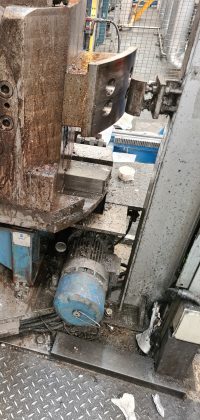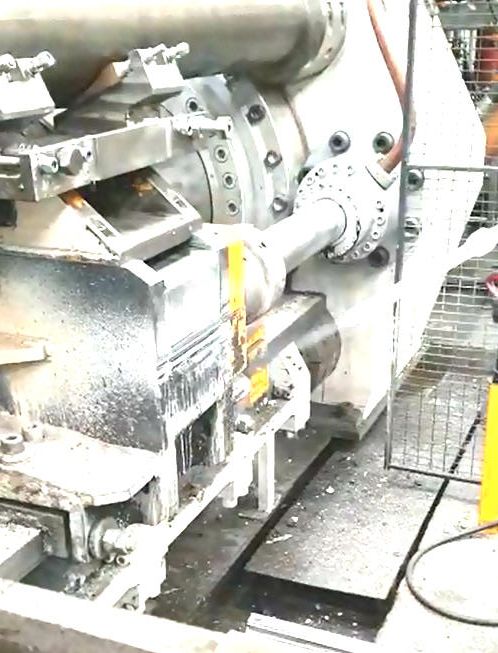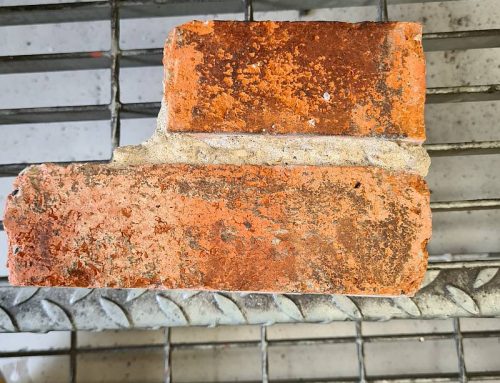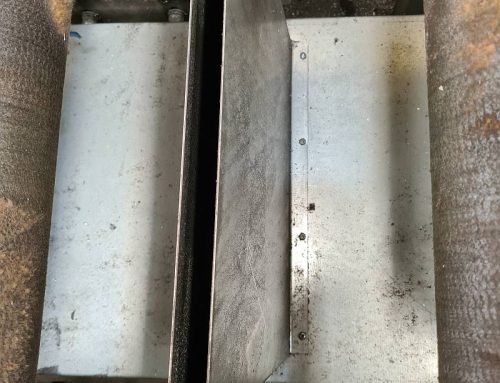Dry Ice Blasting to Clean Surfaces
Dry ice blasting is a form of carbon dioxide cleaning, where dry ice, the solid form of carbon dioxide, is accelerated in a pressurized air stream and directed at a surface in order to clean it.
The method is similar to other forms of media blasting such as sand blasting, plastic bead blasting, or sodablasting in that it cleans surfaces using a media accelerated in a pressurized air stream, but dry ice blasting uses dry ice as the blasting medium. Dry ice blasting is nonabrasive, non-conductive, nonflammable, and non-toxic.
Dry ice blasting is an environmentally responsible cleaning method. Dry ice is made of reclaimed carbon dioxide that is produced from other industrial processes, and is an approved media by the EPA, FDA and USDA. It also reduces or eliminates employee exposure to the use of chemical cleaning agents.
Compared to other media blasting methods, dry ice blasting does not create secondary waste or chemical residues as dry ice sublimates, or converts back to a gaseous state, when it hits the surface that is being cleaned. Dry ice blasting does not require clean-up of a blasting medium. The waste products, which includes just the dislodged media, can be swept up, vacuumed or washed away depending on the containment.
Method
Dry ice blasting involves propelling pellets at extremely high speeds. The actual dry ice pellets are quite soft, and much less dense than other media used in blast-cleaning (i.e. sand or plastic pellets). Upon impact, the pellet sublimates almost immediately, transferring minimal kinetic energy to the surface on impact and producing minimal abrasion. The sublimation process absorbs a large volume of heat from the surface, producing shear stresses due to thermal shock. This is assumed to improve cleaning as the top layer of dirt or contaminant is expected to transfer more heat than the underlying substrate and flake off more easily. The efficiency and effectiveness of this process depends on the thermal conductivity of the substrate and contaminant. The rapid change in state from solid to gas also causes microscopic shock waves, which are also thought to assist in removing the contaminant.
Professional Dry Ice Blasting services
Dry Ice Blasting is a non-abrasive blast method which is fast and effective to remove a number of contaminants without harming the medium. For example APNC Services work on removing paint from brick and stone without damage. Remove buildup of fats and contaminate from pipe work, conveyor lines and process machinery in the engineering food industries and tanks. Bitumen build up easily and quickly.
Our dedicated highly trained engineers can work at heights due to being trained in iPaf, work in confined spaces such as tanks and are available 24/7 to accommodate shutdown work for our clients convenience.
Book an appointment for a site visit.
Here are some of the industries and components we work on.
- Automotive Bitumen Removal & Tarmac Removal
- Brick or wall cleaning
- CNC’s
- Electrical control panels
- Extrusion machinery
- Fire damage
- Food industry
- Foundries
- Graffiti removal
- Heritage & Restoration
- High Level Cleaning
- Oak Beam cleaning
- Oil & Gas
- Paint Removal
- Petrochemical
- Plastics
- Semiconductor industry
Before & After Ice Blast Cleaning by APNC Services


Equipment
The dry ice used can be in solid pellet form or shaved from a larger block of ice. The shaved ice block produces a less dense ice medium and is more delicate than the solid pellet system. In addition, pellets may be made by either compressing dry ice snow, or using tanks of liquid CO2 to form solid pellets. Dry ice made with compressed snow breaks apart more easily and is not as aggressive for cleaning.
Dry ice blasting technology can trace its roots to conventional abrasive blasting. The differences between an abrasive-blasting machine and a dry ice blasting machine are in how they handle the blast media. Unlike sand or other media, dry ice is generally used at its sublimation temperature. Other differences include systems for preventing the ice from forming snowball-like jams, and different materials to allow operation at very low temperatures.
There are two methods of dry ice blasting, two-hose and single hose. The single hose system is more aggressive for cleaning, since the particles are accelerated to faster speeds.
Two-hose dry ice blasting was developed before the single-hose system. The two-hose dry ice blasting approach is very similar to a suction-feed abrasive blast system. Compressed air is delivered in one hose, and ice pellets are sucked out of a second hose by the venturi effect. Compared to a single-hose system, the two-hose system delivers ice particles less forcefully (approximately 5% for a given air supply). For a given amount of compressed air, two-hose systems can have less vertical distance between the machine and applicator. For most systems available today this limit is well in excess of 7.5 m (25 feet). Two-hose systems are generally cheaper to produce due to a simpler delivery system. These systems are rarely seen today as they are less efficient in most applications. Their principal advantage is in allowing finer particles of ice to be delivered to the applicator as the late combination of warm air with cold ice results in less sublimation in the hose. These systems allow for more delicate surfaces to be cleaned such as in semiconductor.
The first dry ice blasting machine to be commercialized was a single-hose system. It was developed by Cold Jet, LLC in 1986, and uses a single hose to deliver air blasts and dry ice. Single-hose dry ice blasters share many of the advantages of single-hose abrasive-blast systems. To avoid the potential dangers of a pressurized hopper, single-hose dry ice blasters make use of a quickly cycling airlock. The single-hose system can use a longer hose than its double-hose counterpart without a significant drop in pressure when the ice leaves the hose. The additional power comes at the cost of increased complexity. Single-hose systems are used where more aggressive cleaning is an advantage. This allows heavier build-up to be cleaned and allows moderate buildup to be cleaned faster.
Uses
Dry ice blasting used to clean bakery equipment, Brewery making machinery and much more across the food suppliers and makers.
Dry ice blasting is utilized in many different types of industries. The unique properties of dry ice make it an ideal cleaning solution in many commercial and manufacturing settings.
Dry ice blasting can clean numerous objects with differing, complex geometries at once, which is why cleaning plastic and rubber molds is a main application for the technology. Dry ice replaces traditional cleaning methods that rely on manual scrubbing and the use of chemical cleaning agents. Dry ice blasting cleans the molds in-place at operating temperature, which eliminates the need to shut production down for cleaning.
Food processing industry
Dry ice blasting can be used to clean food processing equipment. As early as 2004, the UK Food Standards Agency documented the process to effectively decontaminate surfaces of Salmonella enteritidis, E. coli, and Listeria monocytogenes such that these microorganisms are not detectable using conventional microbiological methods. It may also be used to clean some equipment without disassembly and without producing fire or electrical hazards. The EPA recommends dry ice blasting as an alternative to many types of solvent-based cleaning.





